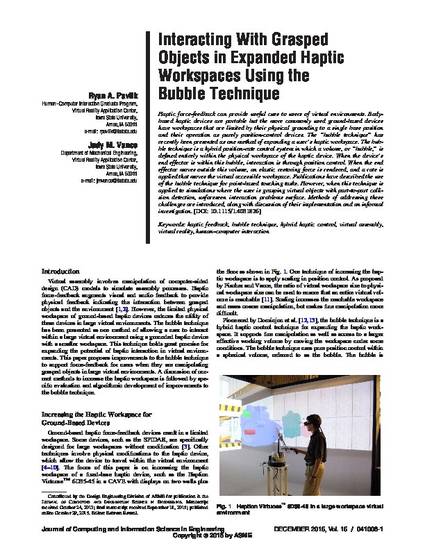
Haptic force-feedback can provide useful cues to users of virtual environments. Body-based haptic devices are portable but the more commonly used ground-based devices have workspaces that are limited by their physical grounding to a single base position and their operation as purely position-control devices. The “bubble technique” has recently been presented as one method of expanding a user's haptic workspace. The bubble technique is a hybrid position-rate control system in which a volume, or “bubble,” is defined entirely within the physical workspace of the haptic device. When the device's end effector is within this bubble, interaction is through position control. When the end effector moves outside this volume, an elastic restoring force is rendered, and a rate is applied that moves the virtual accessible workspace. Publications have described the use of the bubble technique for point-based touching tasks. However, when this technique is applied to simulations where the user is grasping virtual objects with part-to-part collision detection, unforeseen interaction problems surface. Methods of addressing these challenges are introduced, along with discussion of their implementation and an informal investigation.
Available at: http://works.bepress.com/judy_vance/75/

This is an article from Journal of Computing and Information Science in Engineering 15 (2015): 1, doi: 10.1115/1.4031826. Posted with permission.